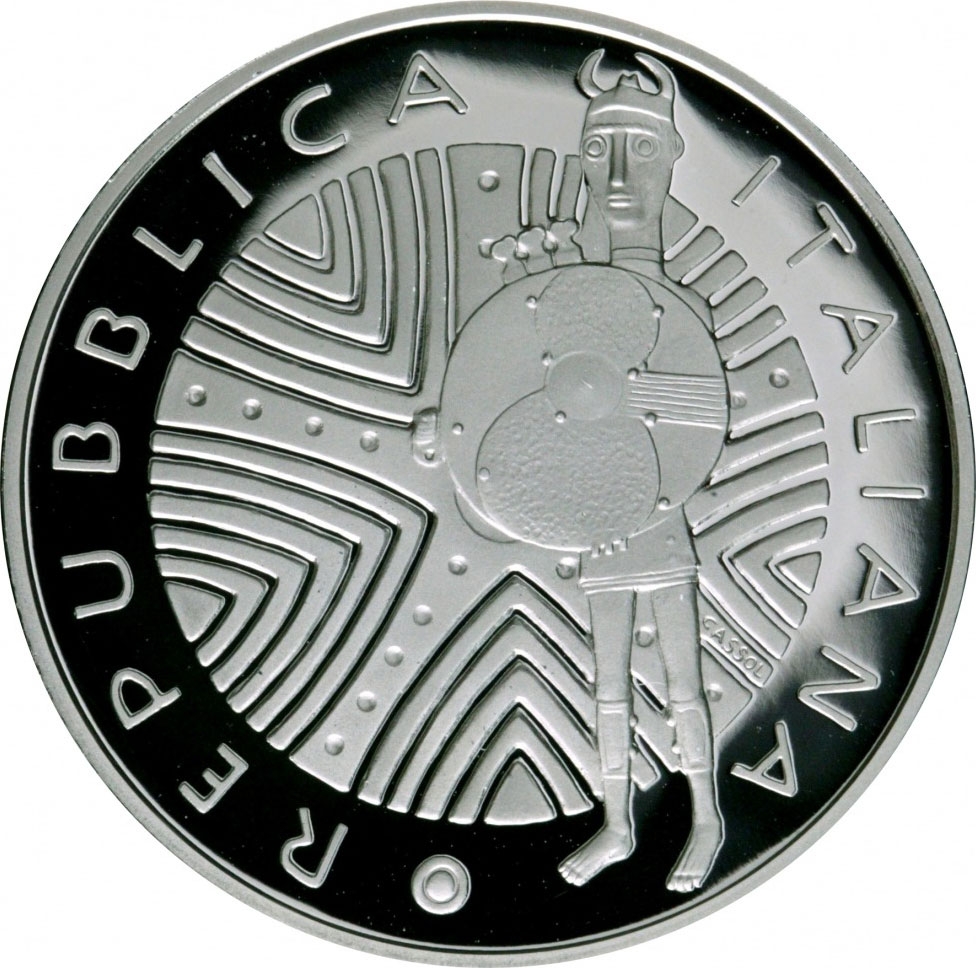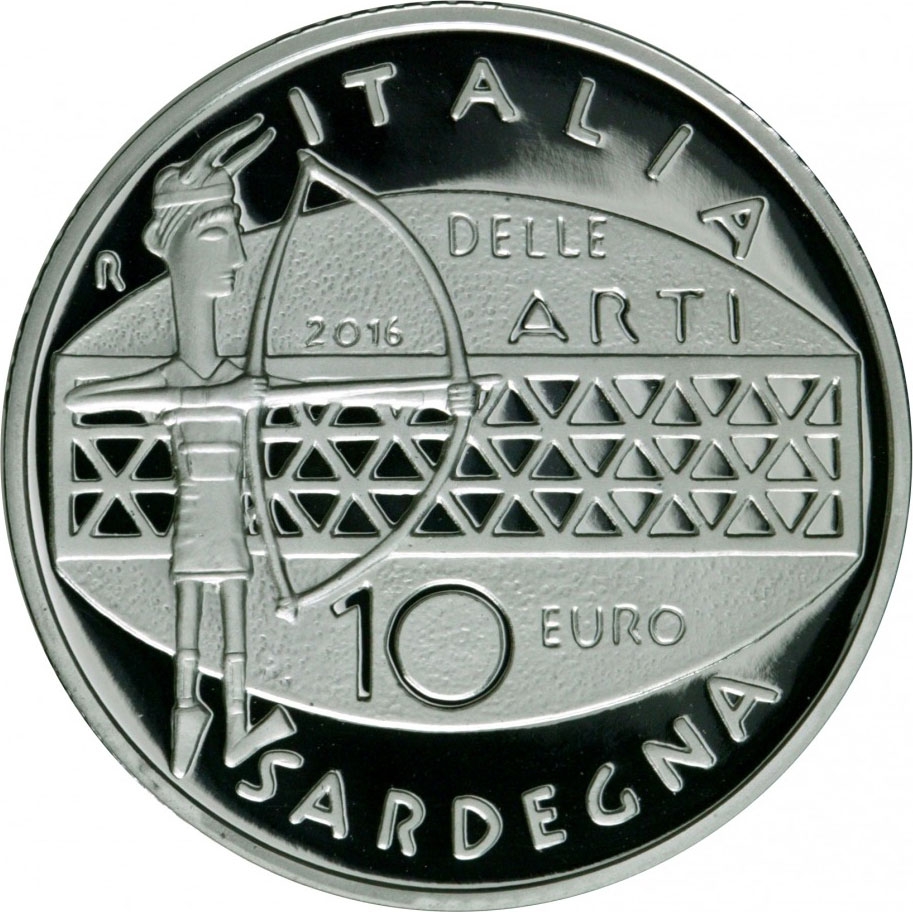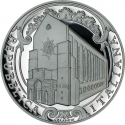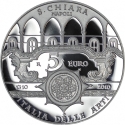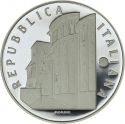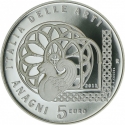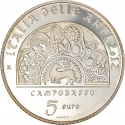You are about to finish your registration. Please check your mailbox (including spam folder). There should be a letter with a confirmation link. Check setting to make sure that your e-mail address is correct.
Send letter againDescription
Sardinia is the second-largest island in the Mediterranean Sea, after Sicily, and one of the 20 regions of Italy. It is located west of the Italian Peninsula, north of Tunisia and immediately south of the French island of Corsica.
Owing to the variety of Sardinia's ecosystems, which include mountains, woods, plains, stretches of largely uninhabited territory, streams, rocky coasts, and long sandy beaches, Sardinia has been metaphorically described as a micro-continent. In the modern era, many travelers and writers have extolled the beauty of its long-untouched landscapes, which retain vestiges of the Nuragic civilization.
Artist: Maria Angela Cassol
Obverse

|
Depicts a Sardinian bronze statuette of a warrior (Rome, Museo Nazionale Preistorico Etnografico Luigi Pigorini); on the background, terracotta round “Pintadera” from Nuragic Sardinia with converging geometric decorations; below, on the right, embedded in the decorative pattern, the name of the designer; circumscription “REPUBBLICA ITALIANA”. REPUBBLICA ITALIANA ⠂ |
|---|---|
Reverse

|
Depicts a Sardinian bronze statuette of an archer (Cagliari, Museo Archeologico Nazionale); in the background, transenna of a bronze Nuragic votive boat in a geometric pattern; in the upper field, in three lines, “Italy of Arts”; on the left, mintmark “R”; in the field, the issue year; below, in two lines, value and the island name. ITALIA |
| Edge |
10 Euro
Italy of Arts
Sardinia
Subscribe series
KM# 399
Italy of Arts
Sardinia
